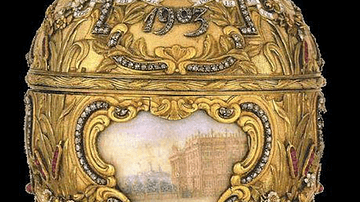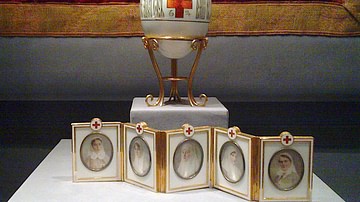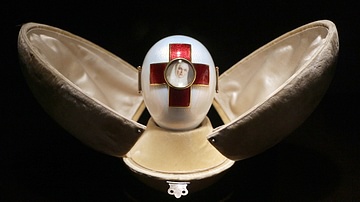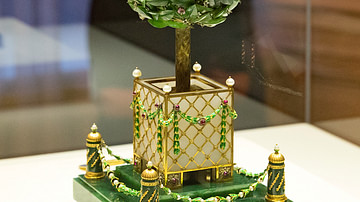Illustration
The 1913 Romanov Tercentenary Egg by Peter Carl Fabergé (1846-1920). The egg was given by Tsar Nicholas II (r. 1894-1917) to his wife Alexandra Feodorovna. It commemorated the 300th anniversary of the Romanov ruling dynasty. The egg is made of gold with opalescent white enamel chased with designs of double-headed eagles and crowns. The exterior is covered with 18 miniature portraits of Romanov rulers by Zuiev. Inside the egg is a globe of two halves made of gilt and blue steel which shows the extent of the Russian empire in 1613. It measures 18.6 cm (7.3 in) in height.
Armoury Museum, Kremlin, Moscow.
Cite This Work
APA Style
Shakko. (2021, May 03). Romanov Tercentenary Egg by Fabergé. World History Encyclopedia. Retrieved from https://www.worldhistory.org/image/13940/romanov-tercentenary-egg-by-faberge/
Chicago Style
Shakko. "Romanov Tercentenary Egg by Fabergé." World History Encyclopedia. Last modified May 03, 2021. https://www.worldhistory.org/image/13940/romanov-tercentenary-egg-by-faberge/.
MLA Style
Shakko. "Romanov Tercentenary Egg by Fabergé." World History Encyclopedia. World History Encyclopedia, 03 May 2021, https://www.worldhistory.org/image/13940/romanov-tercentenary-egg-by-faberge/. Web. 24 Apr 2025.







